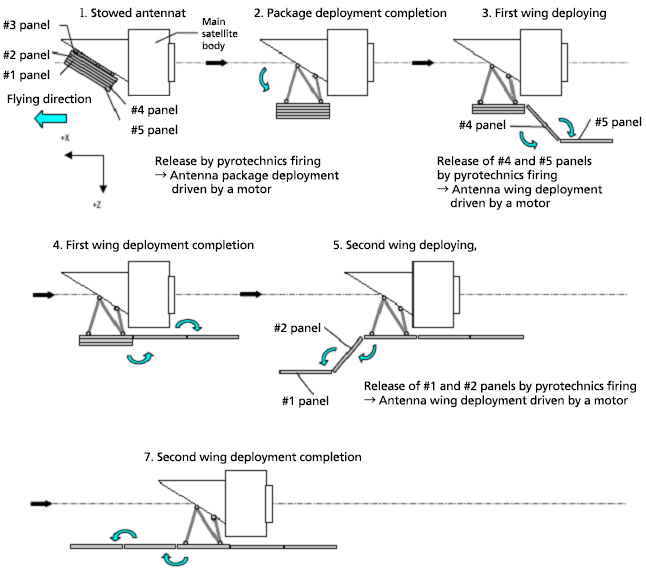DAICHI-2 (ALOS-2)
L-band Synthetic Aperture Rader-2 (PALSAR-2) Antenna Deployment
May 26, 2014 (JST)
Japan Aerospace Exploration Agency
The Japan Aerospace Exploration Agency (JAXA) confirmed that the L-band synthetic aperture radar-2 (PALSAR-2) antenna of the Advanced Land Observing Satellite-2 "DAICHI-2" (ALOS-2)*1 was deployed successfully (the second wing deployment.)
With this confirmation, the PALSAR-2 antenna deployment operation was completed.
The satellite is now in a stable condition.
(Next press release)
The next press release about the completion of the critical operation phase*2 is to be issued.
- *1 L-band synthetic aperture radar (PALSAR-2)
- The Phased Array type L-band Synthetic Aperture Rader-2 (PALSAR-2) using the L-band microwave of 1.2 GHz band can perform observations regardless of weather conditions and the time of the day. The PALSAR-2 is a renovated version of the 10-meter resolution PALSAR installed on the DAICHI to acquire data with a resolution of one to three meters. The PALSAR-2 can also observe a wider range of about three times (870 kilometers to 2,320 kilometers observation swath) compared to the PALSAR, which could only view from its right side, by adding the observation function on both sides.
- *2 Critical operation phase
- The critical operation phase is a period from the separation from the launch vehicle till the stabilization of the satellite attitude for regular operations by the satellite attitude control system after the deployment of the solar array paddles as well as communication and mission equipment antennas.
PALSAR-2 Antenna Deployment
Attachment (1/2)
PALSAR-2 deployment sequence diagrams

Attachment (2/2)
Figure of PALSAR-2 Deployment
